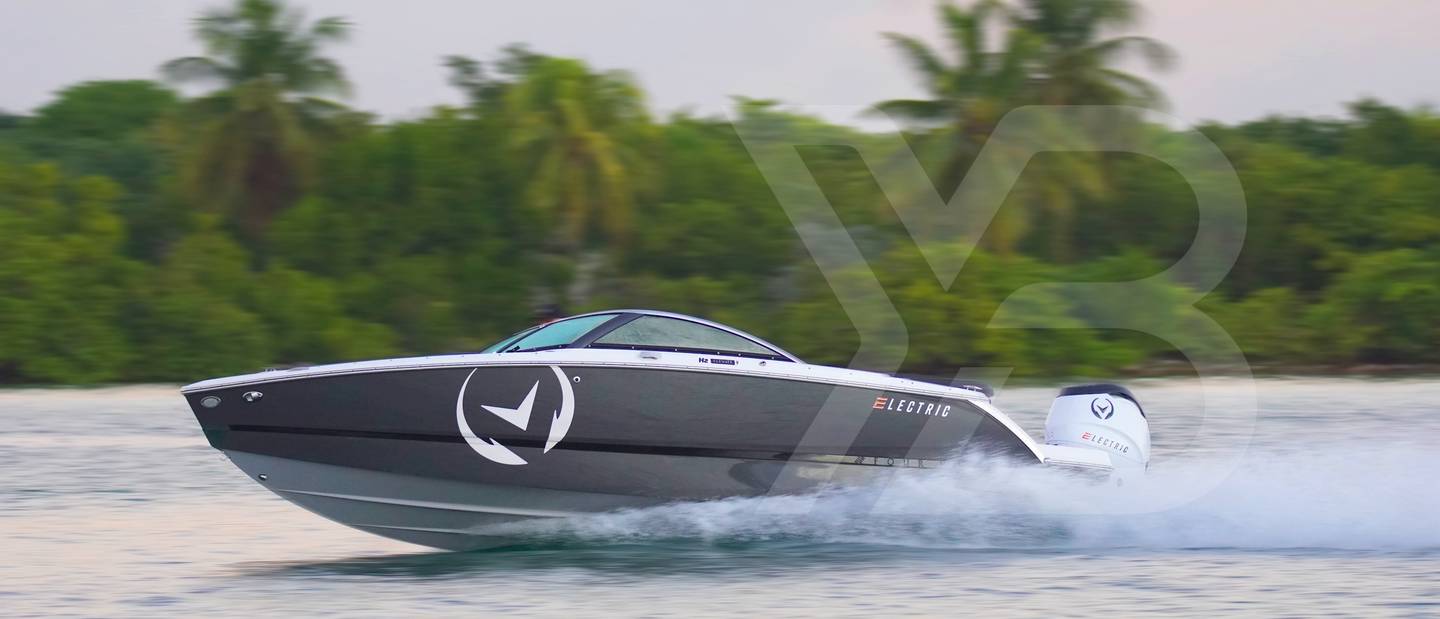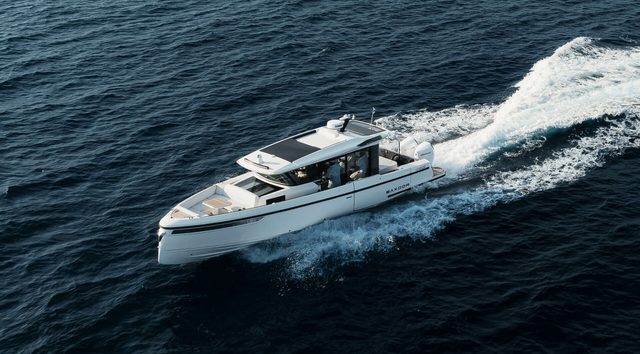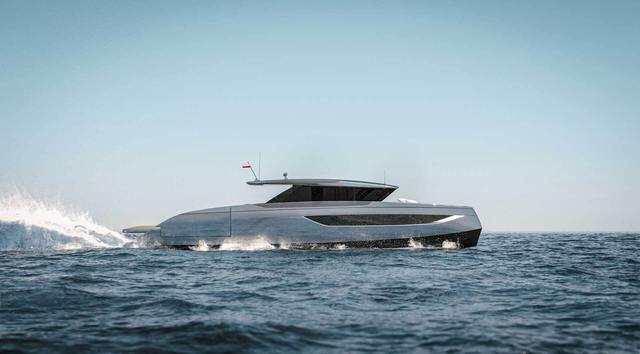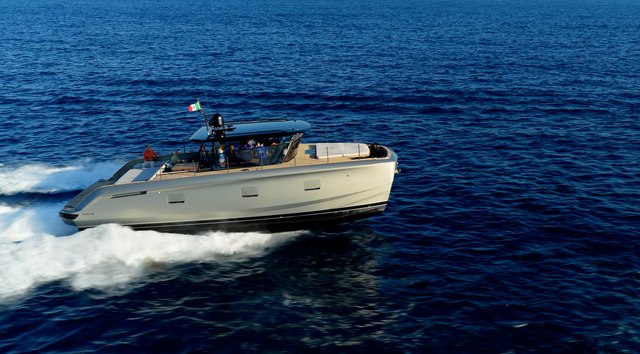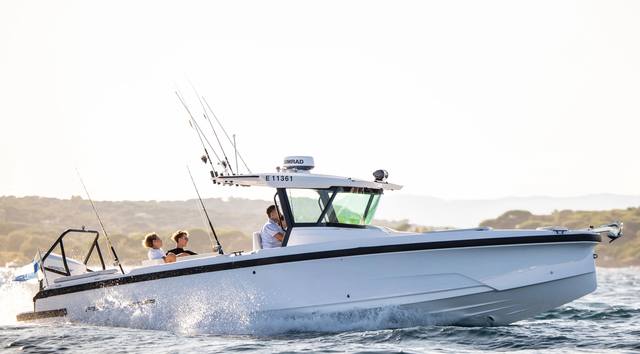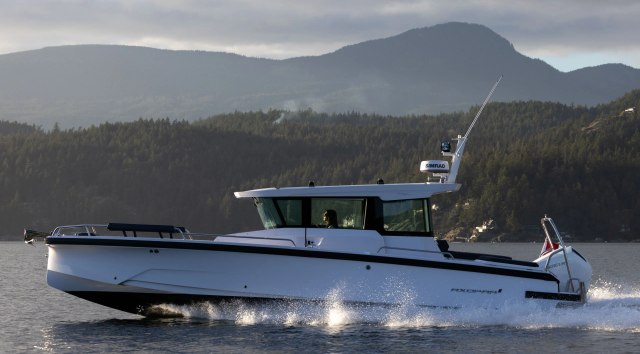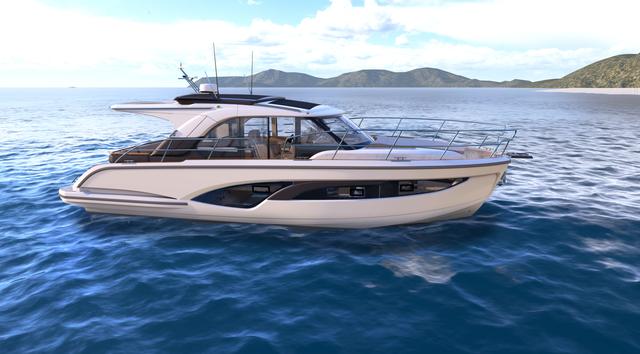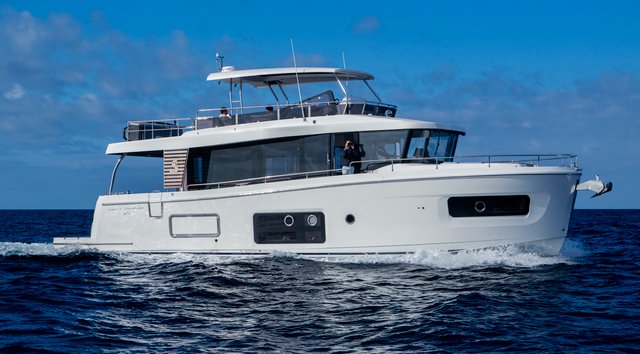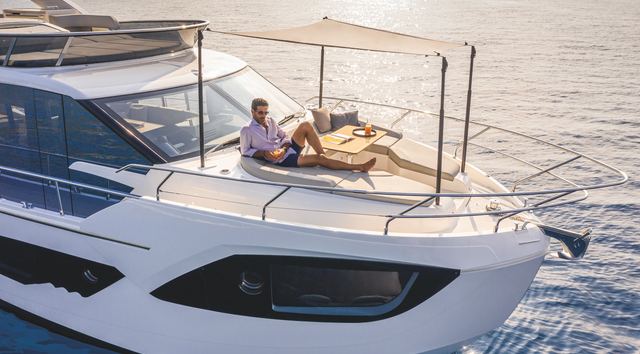At first glance, it looks like any other 22-foot bowrider. But the badge on the cowling tells a different story. This isn’t powered by a Mercury or a Yamaha, it has a 100hp electric outboard from Vision Marine.
Four Winns H2 OB Key Facts

- LOA 6.7m
- Model Year 2023
- Status In Production
- Yacht Type Sportsboat
- Use Type Dayboating
Test & Review Video
This was a genuine first drive. Straight into the helm seat in the sea trial zone at Miami Boat Show. And the immediate impression is how normal it feels. Yes, this is a fully electric boat, but you’re still staring at a familiar layout: throttle to your right, hydraulic steering, clear sightlines, and in this case, a dual-screen helm with the Vision Marine readout on one side.
Conditions weren’t ideal with on a busy boat show waterway, lots of chop and six people on board, but the H2e coped well. We were making about 20 knots comfortably, and at that pace, the screen told us we had about 8 miles of range left. That’s obviously down on the best-case figures, but with the load on board and the lumpy conditions, it's understandable. Vision Marine and Four Winns say that at 20-25 knots you should expect just over an hour of continuous run time. And in smoother water with fewer people, you’d likely get close to that.
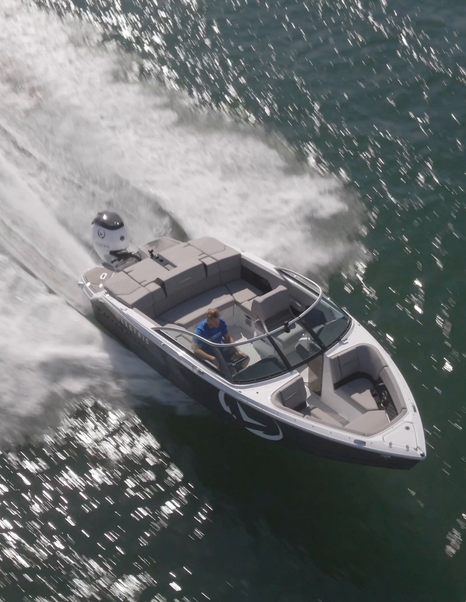
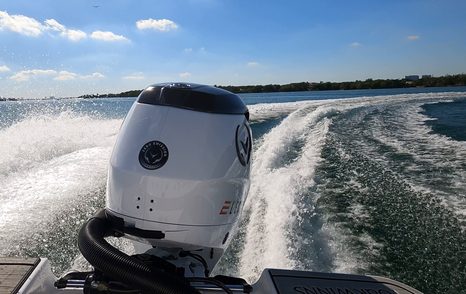
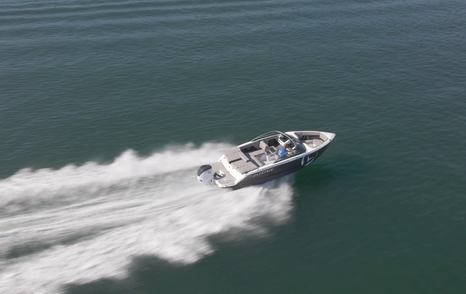
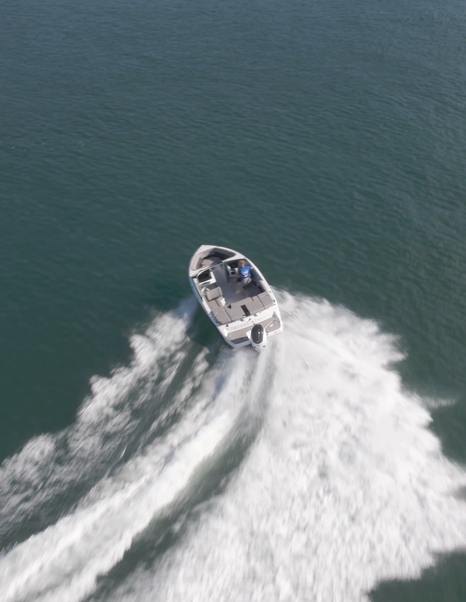
As for the driving experience, the silence really is very different. There’s a slight whine from the reduction gearbox, but you don’t have the usual thrum of a combustion engine beneath you. It changes the feel of the boat entirely. Conversations are easier, background noise fades away, and the boat seems to glide more than roar. That said, you still get proper punch off the line. Electric torque delivers a strong surge immediately, and although we couldn’t test flat-out acceleration because of the conditions, that responsiveness is a clear benefit. The hydraulic steering is exactly what you'd expect, so docking and low-speed control feel reassuringly familiar.
The H2e will plug into a standard shore power connection, and with its closed-loop cooling system, it can charge out of the water as well. And mooring it has no drama at all. This is a 6.7m boat with a well-balanced hull and instant throttle response. You lose the audible cues of a petrol engine, which takes a little adjustment, but you gain some finer control over manoeuvres, and you’ll never fill the cockpit with exhaust fumes while idling.
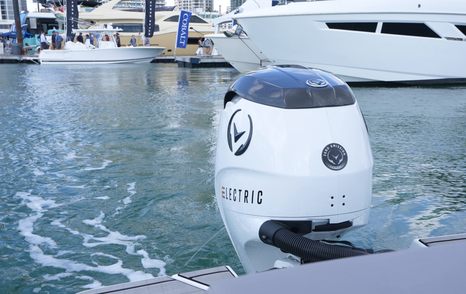
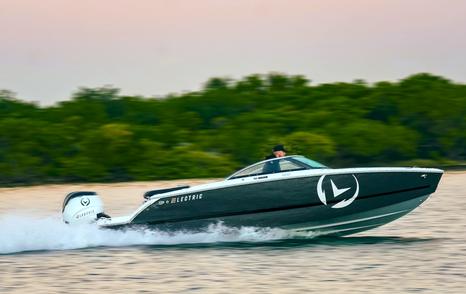
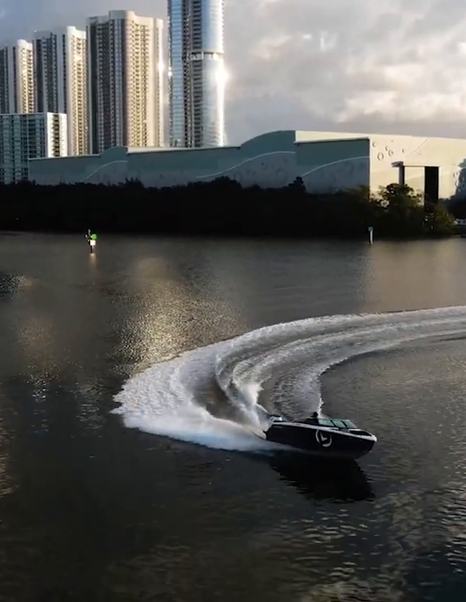
This is the H2 OB hull, no question. Same 22-foot StableVee platform, same vertical stem, same curved glass screen. But what makes the H2e different is what’s bolted to the back and buried beneath the deck. Instead of a petrol outboard and a fuel tank, you get the Vision Marine E-Motion 180E electric drive and a 70kWh lithium battery bank. And despite that swap, it all still looks and feels like a proper Four Winns. There's no awkward integration or tech-for-tech's-sake clutter.
Structurally, Four Winns haven’t compromised. The batteries are mounted low to keep the centre of gravity down, and even with the added weight on at roughly 1,300lb heavier than a standard H2 OB, the boat doesn’t feel overburdened. In fact, the extra mass seems to help with the ride, particularly in the chop. It settles quickly and doesn’t feel flighty. The only obvious giveaway from the outside is the absence of a fuel filler and the presence of a charging port.
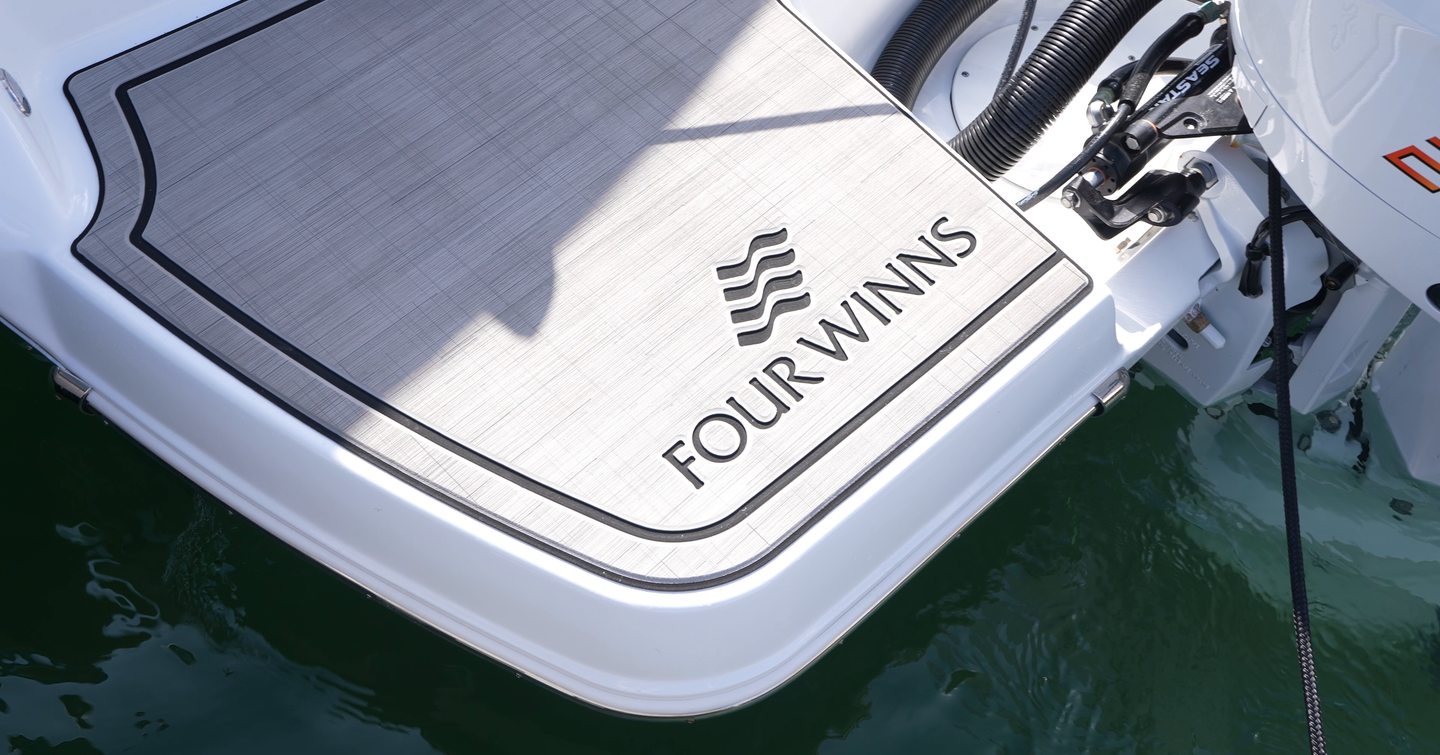
Inside, the layout is unchanged. Same U-shaped cockpit, hinged bow cushions, same handy details like the carry-on cooler and cockpit "basement" under the aft bench. From a design perspective, that’s a smart move. It keeps the user experience aligned with the rest of the H-Series while letting the electric drivetrain take care of the innovation. There are also no restrictions on finish. You still get the same hand-stitched upholstery, stainless steel fixtures, LED courtesy lighting, and non-skid moulded decks. Construction-wise, this is all familiar territory. You’ve got a full fibreglass stringer grid, self-bailing decks, stainless hardware throughout, and everything built to ABYC standards. So while the propulsion is progressive, the boat itself is the same as ever.
From a range perspective, this is still one of the more compact models in the H-Series. The lineup stretches from the 6m (20ft) H1 to the big twin-outboard H33, and the design cues are consistent across the lot. That signature windshield line, the high freeboard, and the clean gelcoat finishes all carry through. Where the H2e punches above its weight is in its helm setup. Unlike the petrol H2, which comes with a single display, the H2e has twin touchscreen monitors as standard. That puts it on par with the bigger H9 and H33 models in terms of tech, even though it shares its physical dimensions with the regular H2.
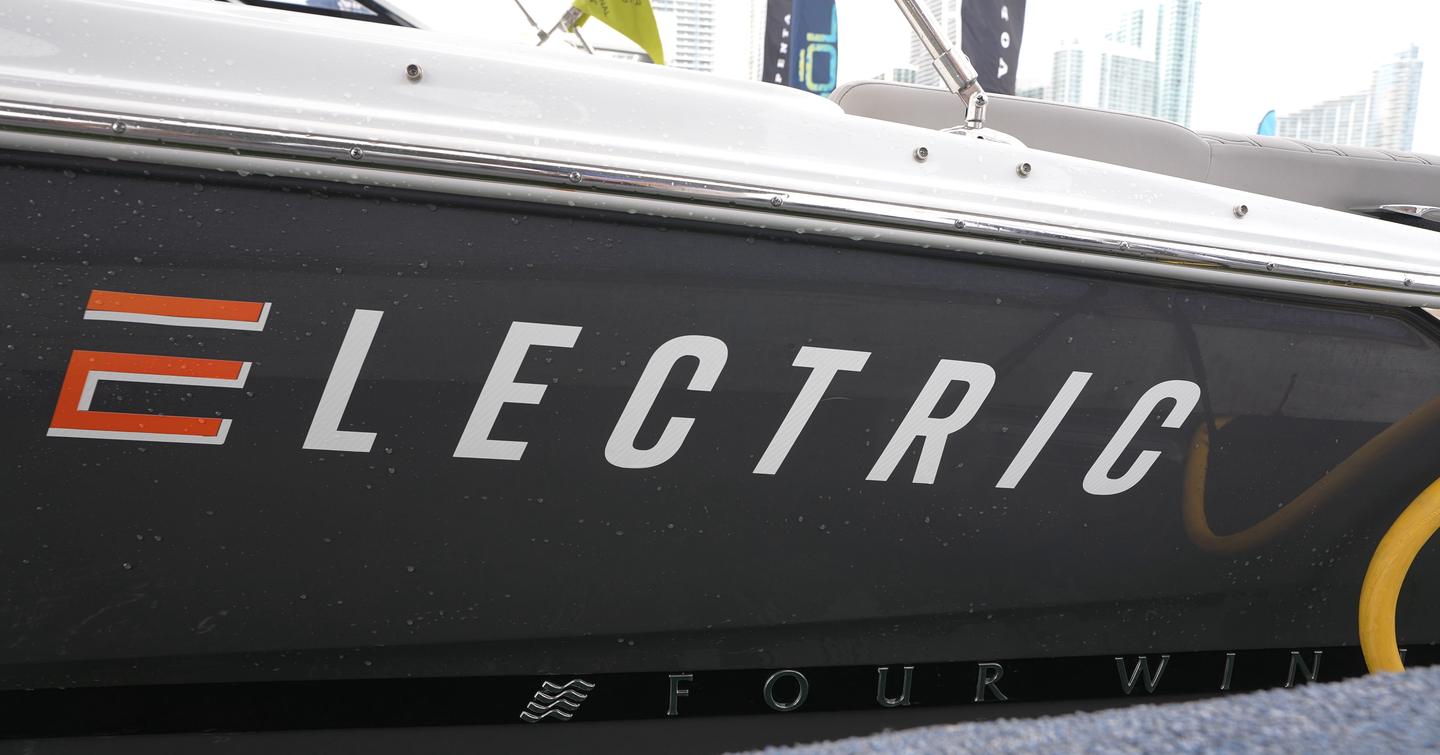
Being a bowrider, there’s not a full interior as such, but there’s still a good level of thought put into how the inside of this boat works. Under the port console, you have the option to fit a toilet. That can be a simple loo with a curtain or a pump-out unit with a privacy enclosure. For a 22ft electric runabout, having that facility at all is a bonus, especially if you’ve got kids or plan to spend a full day on the water.
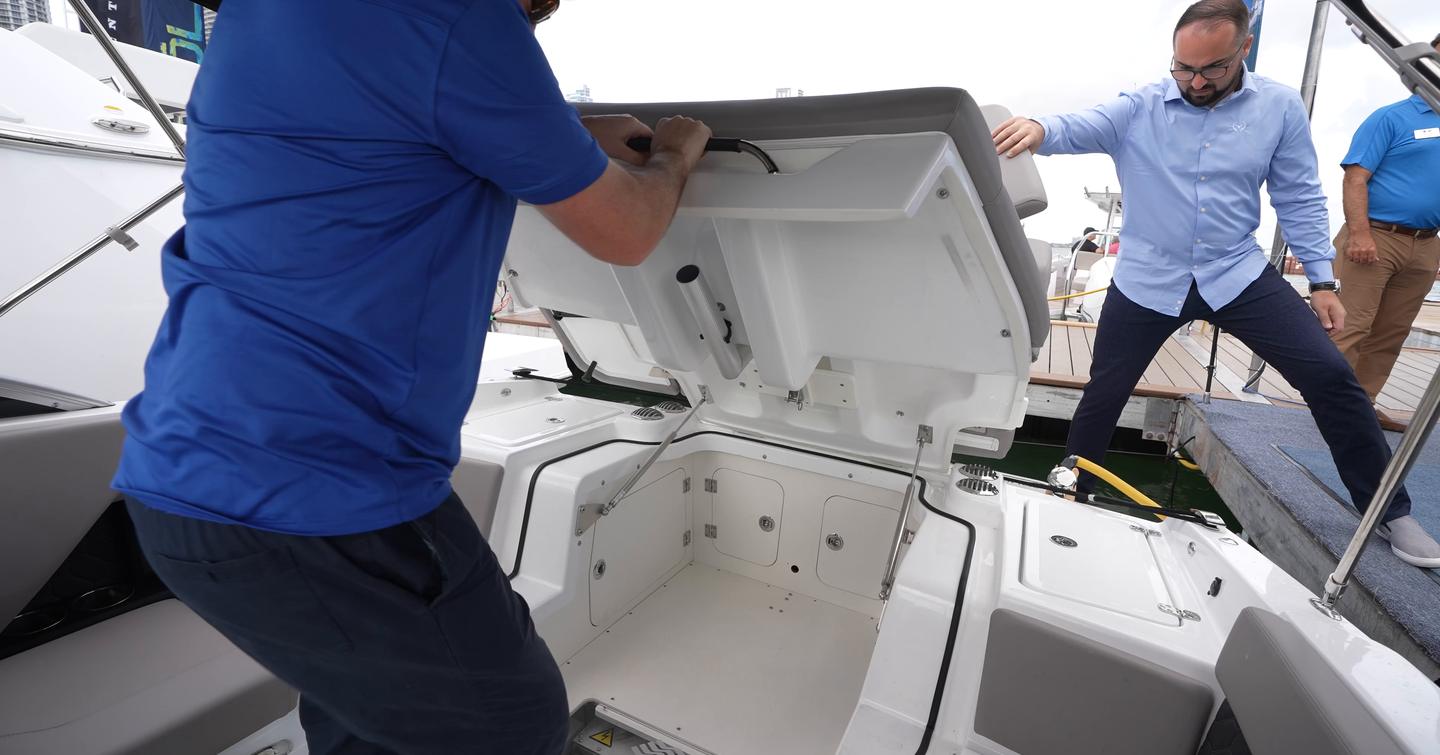
This is where the H2e really starts to pull ahead of the petrol version. The helm is modern, and not just in terms of propulsion. You get twin touchscreen displays as standard, set cleanly into a sculpted vinyl dash with LED backlighting and subtle detailing. One screen handles navigation and charting, the other deals with motor data and system information, including battery use, range estimation, and status monitoring. It’s all intuitive and surprisingly refined.
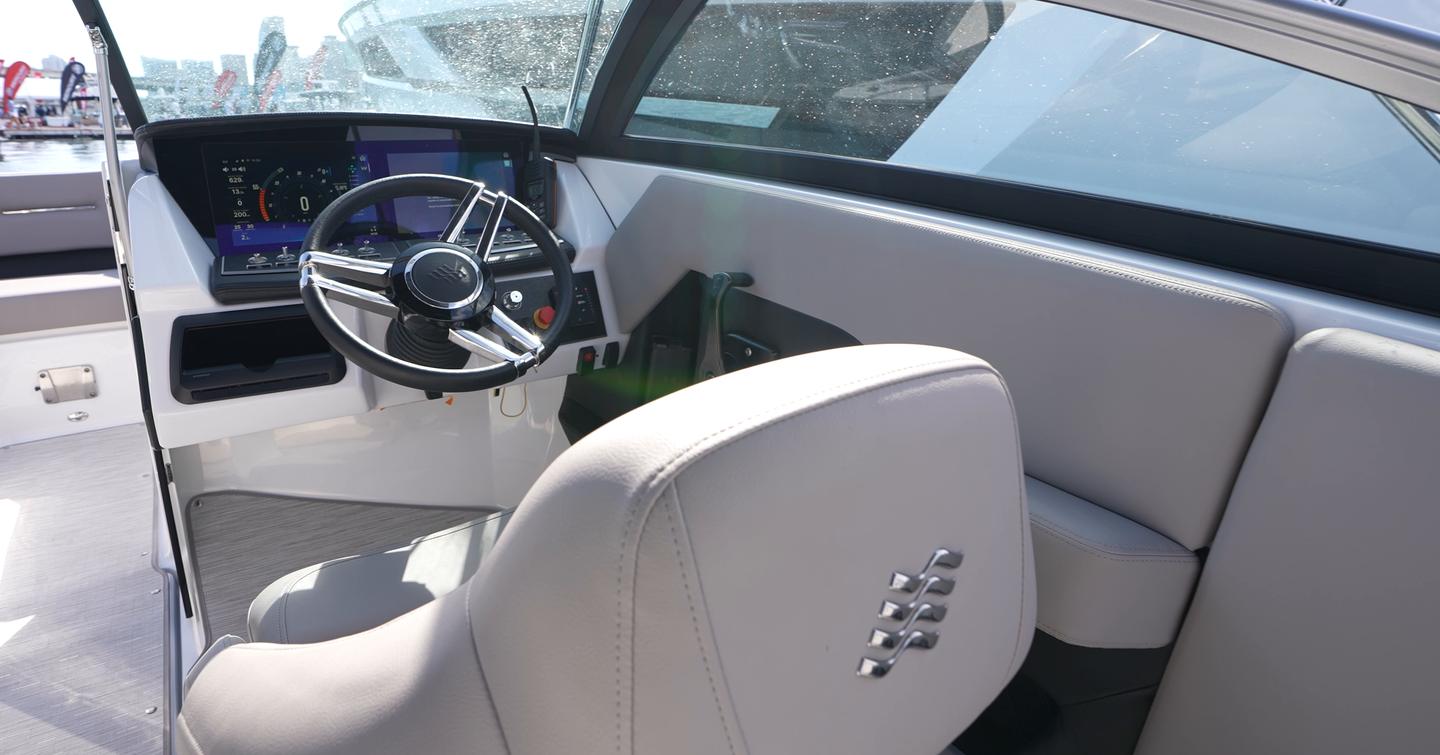
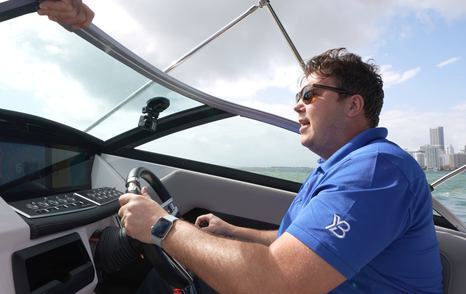
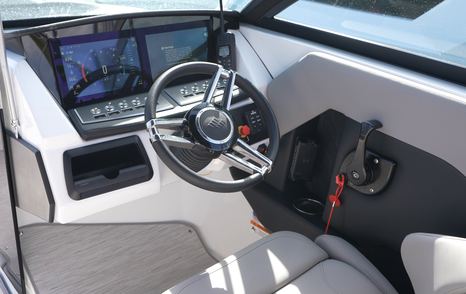
You’ve got a tilt-adjustable wheel with a satisfying shape and finish, plus proper hydraulic steering so the handling feels natural straight away. There’s a wireless phone charger built into the console, USB ports within reach, and lighted rocker switches for key functions. Even in rougher conditions, the layout feels calm and composed. There’s no need to second-guess the controls, and the twin-screen setup means you’re not constantly flicking through menus just to find a basic readout.
You sit quite low in the boat, which gives you shelter from the wind, but the visibility is still excellent. The full-height wraparound screen does its job without getting in the way, and because the motor is so quiet, you can actually hear the sound system at planing speeds without shouting over it.
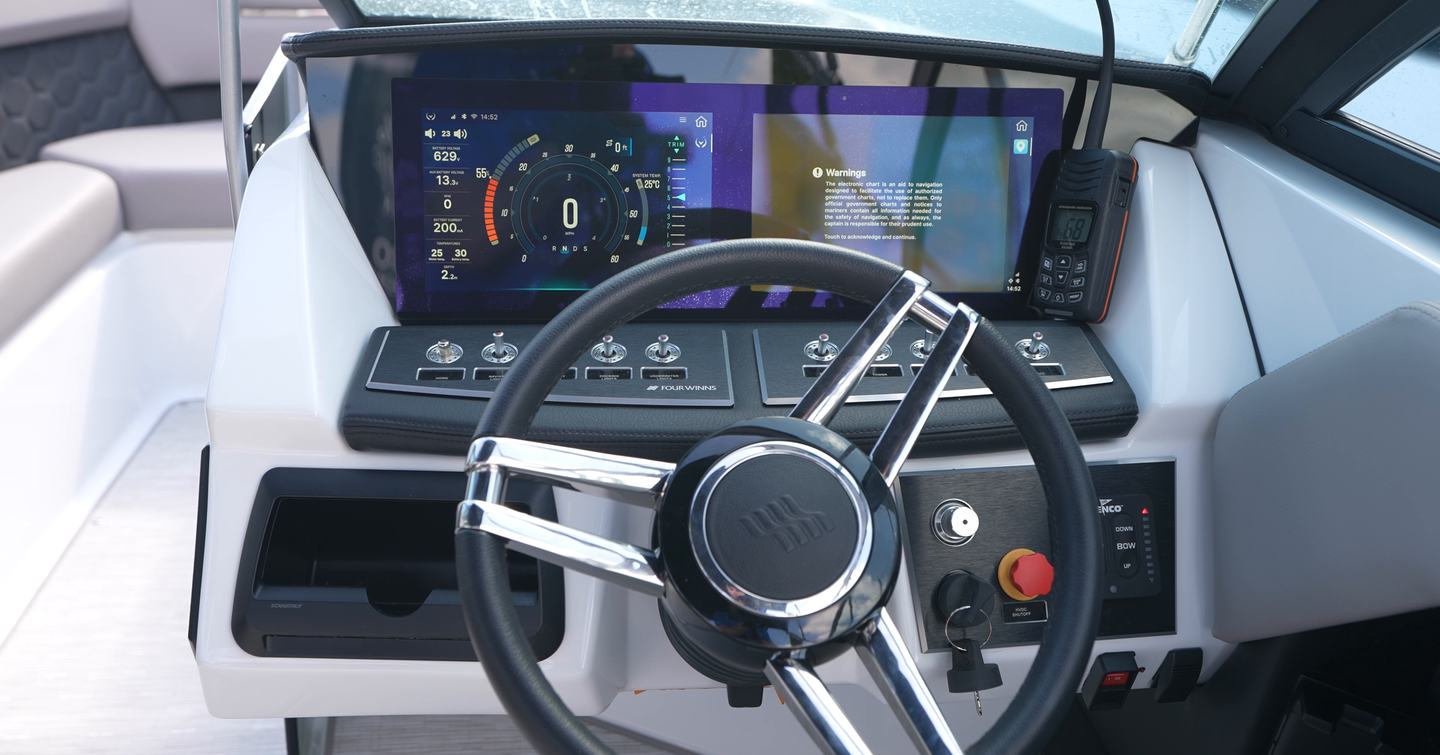
On deck, this is a classic bowrider layout, and that’s no bad thing. The swim platform stretches right across the transom with a folding stainless steel ladder tucked underneath, and there’s enough overhang to make boarding from the dock straightforward. Because the electric motor is transom-mounted just like a petrol outboard, you still get full use of the platform without anything being boxed off or fenced in.
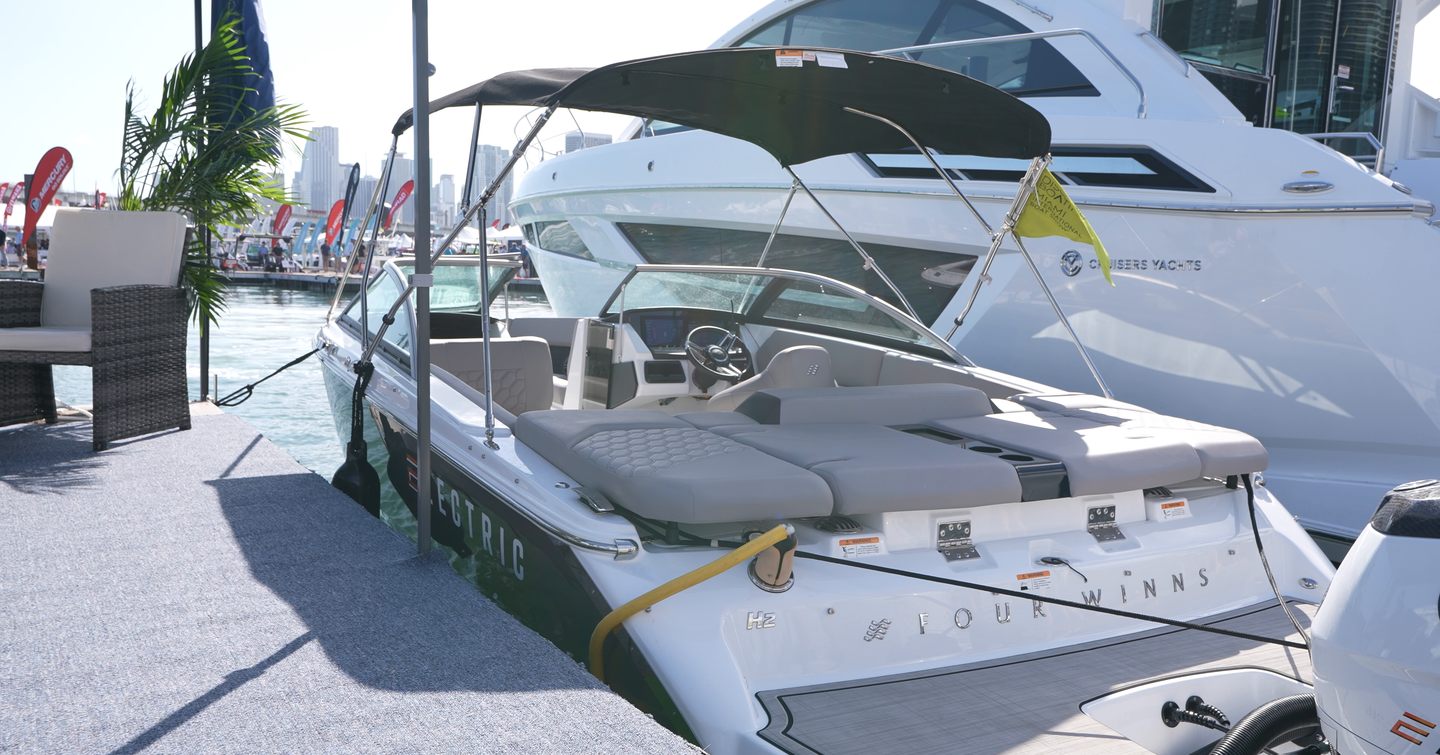
A walk-through section leads you into the cockpit without having to climb over cushions. The aft bench wraps around into a U-shape, giving you space to stretch out or gather a group. Underneath, there’s a deep compartment in what Four Winns call the cockpit basement, which houses a carry-on cooler and extra gear. Storage in general is generous, with under-seat bins, sidewall pockets with cupholders, and even a hidden trash bin.
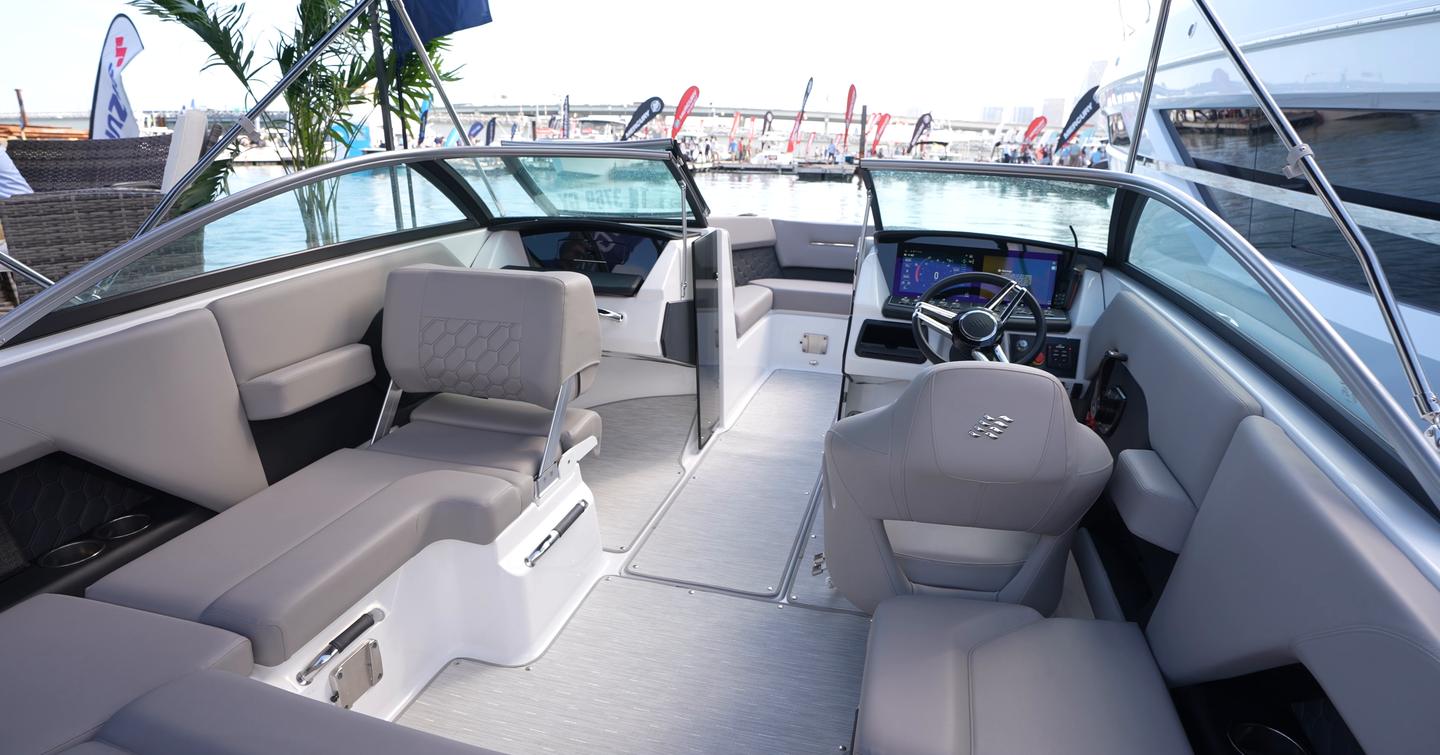
The bow area is very usable. You’ve got hinged seat cushions with bins beneath and good backrest angles. Optional infill cushions can turn this into a full sunpad if needed, and there’s a mounting point for a table up front too.
Decking is moulded non-skid as standard, but you can add snap-in matting in a few different colours. There’s also the option for SeaDek-style surfacing on the platform and walk-through, in titanium or latte tones. And if you want shade, there’s a neat selection of bimini tops and even a sail shade that clips across the cockpit when the boat’s at rest.
You also don’t miss out on style touches. Stainless cleats, polished grab handles, colour-accented upholstery, and clean wraparound glass screen all give the H2e a sharp look. And because the H2e is based on the same platform as the petrol H2 OB, it inherits the same generous proportions and high freeboard, which helps keep the cockpit dry when you’re out in open water.
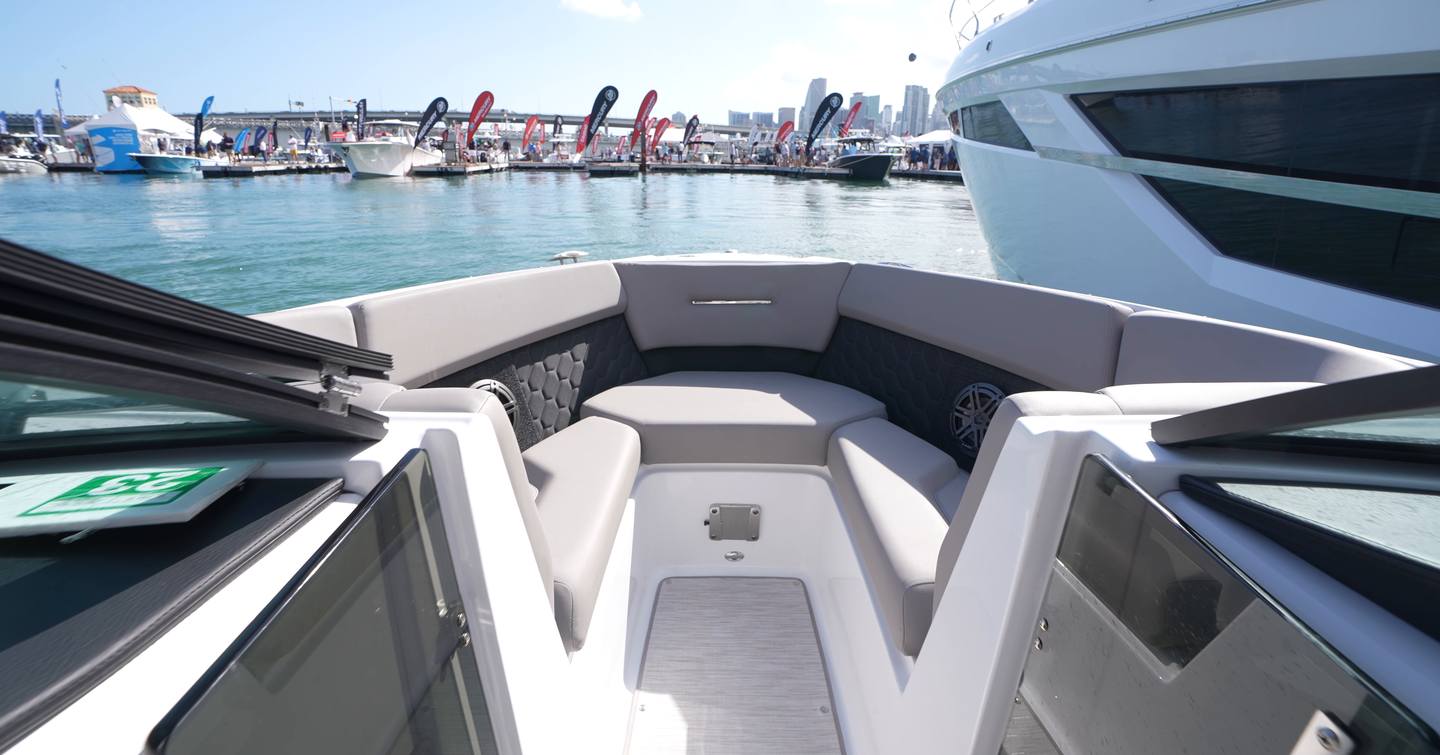
This is where the big question hangs. The H2e costs around £154,000 or $190,000. That’s a huge step up from the petrol-powered H2 OB, which starts from roughly £89,000 or $110,000. And while the electric model comes with some high-end kit as standard - twin screens at the helm, upgraded stereo, smart upholstery - the fact remains you’re paying a significant premium to go electric.
There are savings to be had on running it. No fuel to buy, no engine servicing or winterising. If you keep your boat on a trailer or lift, you can charge it at home and avoid fuel docks entirely. And the running costs over time are much lower. But the range is limited. In ideal conditions, you might get an hour and a quarter of running at 20 to 25 knots. In the real world, with a few people on board and some chop, that number drops.
And that’s the crux of it. If your boating is made up of short trips, gentle cruises, or you’ve got easy access to a charger after each run, the H2e makes a bit more sense.
The other thing is what else that money buys you. At this price, you’re into the territory of larger, more powerful petrol models, even the 26-foot H6. Or a very well-specced petrol H2 with every box ticked. And while the H2e is a neat execution of the idea, the reality is you’re paying more and getting less range, more weight, and a longer recharge time. That might be worth it for the silence, the ease, and the low maintenance. But it’s still a hard sell if outright value is the goal.
Our Verdict
This was a quick test in far from ideal conditions, but it was enough to get a feel for what the H2e is, and what it isn’t. It’s a neatly executed electric version of the petrol H2, and it works in the sense that it drives like a normal outboard-powered boat. There’s no fuss, no unfamiliarity, and the quietness does change the experience. It’s calmer, cleaner, and simpler.
But the limits are clear. The range is modest, and in real-world conditions it drops off quickly. Charging is straightforward if you’ve got shore power, but it still takes time. And the price gap between the electric and petrol versions is hard to ignore. You’re paying significantly more and getting less in terms of outright usability.
That doesn’t mean it’s a bad boat. The integration is tidy, the build quality is good, and for certain use cases like short runs from home or lake use, it might tick the right boxes. But it’s not a solution for everyone. It’s an early-stage option in a market that’s still working out where electric fits. And for now, the trade-offs are still pretty steep.
Reasons to Buy
- Feels familiar at the helm
- Strong electric torque off the line
Things to Consider
- Range very limited in reality
- Expensive option over petrol
- Extra weight adds 1,300lb or so
- Electric still feels early-stage here
Looking to own a Four Winns H2 OB ? Use YachtBuyer’s Market Watch to compare all new and used Four Winns H2 OB Boats for sale worldwide. You can also order a new Four Winns H2 OB , customized to your exact specifications, with options for engine choice and layout configuration. Alternatively, explore our global listings of new and used boats for sale and find your perfect boat today!
Rivals to Consider
The Scout 215 XSF is a 21-foot centre-console with a focus on performance and utility. It weighs just under 2,800lb without the engine and is rated up to 200hp, usually paired with a Mercury 150 or 200. Top speed sits around 50 mph, and at 22 mph it returns close to 5mpg. The layout is open and practical, with a forward sunpad, integrated baitwell, rod holders, and optional T-top. Build quality is solid, with hand-laid fibreglass and a self-bailing cockpit, but the feel is very different to the Four Winns. There’s less upholstery, less weather protection, and far more emphasis on durability. It’s faster, lighter, and more versatile for active use, but it doesn’t offer the same comfort or refinement, and it comes with all the usual servicing and fuel costs.
The Boston Whaler 210 Vantage is a dual-console layout that offers more protection and flexibility than a centre-console. It carries nine people, has an enclosed head, convertible bow and stern seating, and lots of under-seat storage. The hull is foam-filled, so it’s unsinkable, and it rides well with 200-250hp on the transom. Expect cruising speeds in the mid-30s and a top end in the mid-40s. It’s a capable all-rounder, suited to family days, watersports, or fishing, and it feels well made throughout. At around $160,000 fully specced, it undercuts the H2e slightly, but still sits in that premium bracket. It’s more usable for longer trips and mixed activities, but it’s still a petrol boat, with all the maintenance and running costs that go with it.
Considering a new boat? Explore Four Winns' entire current range to find the model that best suits your needs, and compare it with alternatives from competitors to ensure you make the perfect choice.
Specifications
- Builder Four Winns
- Range H-Series
- Model H2 OB
- Length Overall 6.7m
- Beam 2.54m
- Draft 0.89m
- Hull GRP
- Yacht Type (Primary) Sportsboat
- Use Type (Primary) Dayboating
Interested in a H2 OB?
NEW Build
Find your local dealer for a personalised, no-cost consultation
or just request
Brochures & Pricing
Used & In Stock
Looking for a ready-to-go H2 OB or pre-owned options? Explore all inventory of the H2 OB available worldwide
